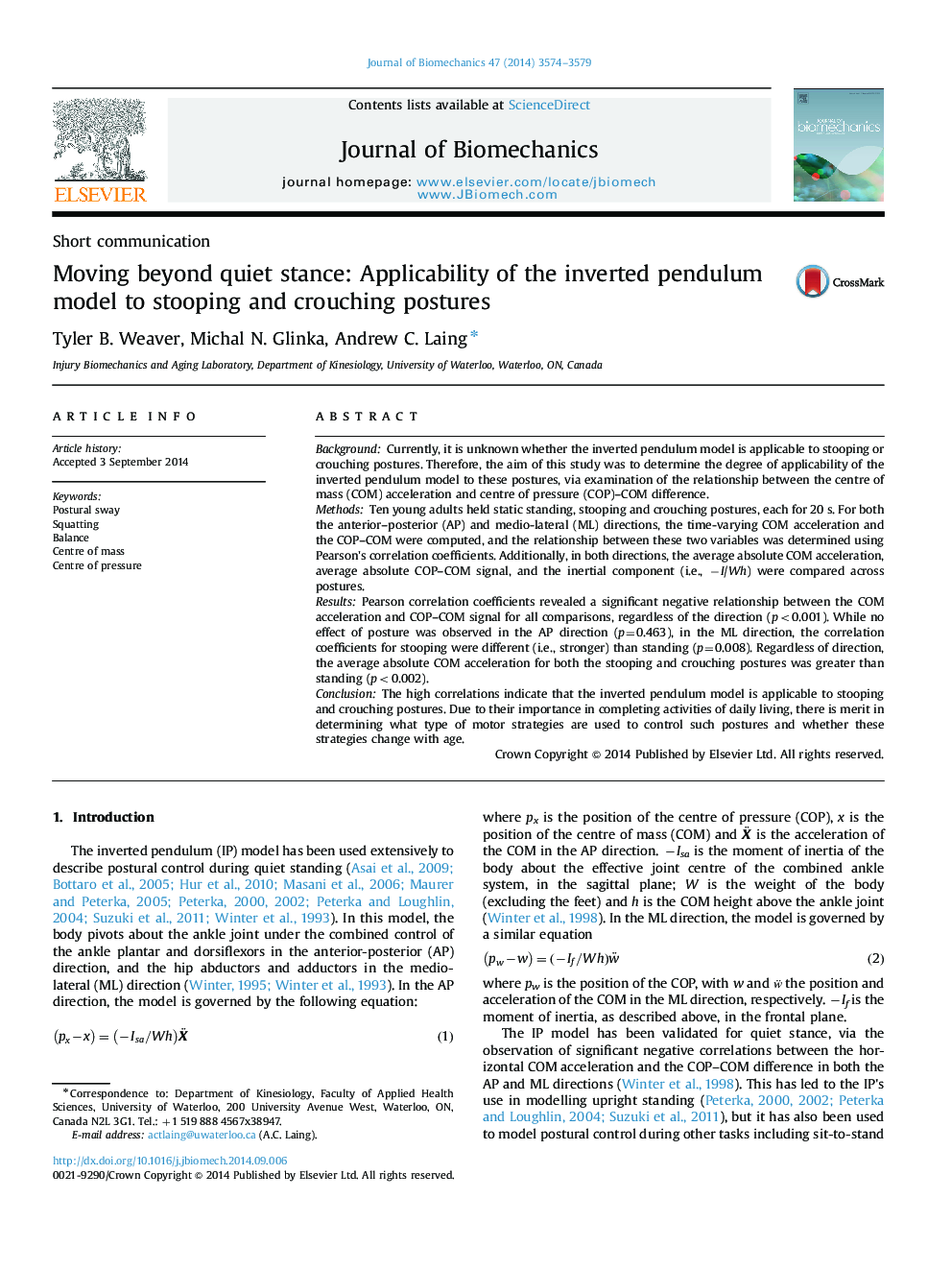| Article ID | Journal | Published Year | Pages | File Type |
|---|---|---|---|---|
| 872070 | Journal of Biomechanics | 2014 | 6 Pages |
BackgroundCurrently, it is unknown whether the inverted pendulum model is applicable to stooping or crouching postures. Therefore, the aim of this study was to determine the degree of applicability of the inverted pendulum model to these postures, via examination of the relationship between the centre of mass (COM) acceleration and centre of pressure (COP)–COM difference.MethodsTen young adults held static standing, stooping and crouching postures, each for 20 s. For both the anterior–posterior (AP) and medio-lateral (ML) directions, the time-varying COM acceleration and the COP–COM were computed, and the relationship between these two variables was determined using Pearson׳s correlation coefficients. Additionally, in both directions, the average absolute COM acceleration, average absolute COP–COM signal, and the inertial component (i.e., −I/Wh) were compared across postures.ResultsPearson correlation coefficients revealed a significant negative relationship between the COM acceleration and COP–COM signal for all comparisons, regardless of the direction (p<0.001). While no effect of posture was observed in the AP direction (p=0.463), in the ML direction, the correlation coefficients for stooping were different (i.e., stronger) than standing (p=0.008). Regardless of direction, the average absolute COM acceleration for both the stooping and crouching postures was greater than standing (p<0.002).ConclusionThe high correlations indicate that the inverted pendulum model is applicable to stooping and crouching postures. Due to their importance in completing activities of daily living, there is merit in determining what type of motor strategies are used to control such postures and whether these strategies change with age.
